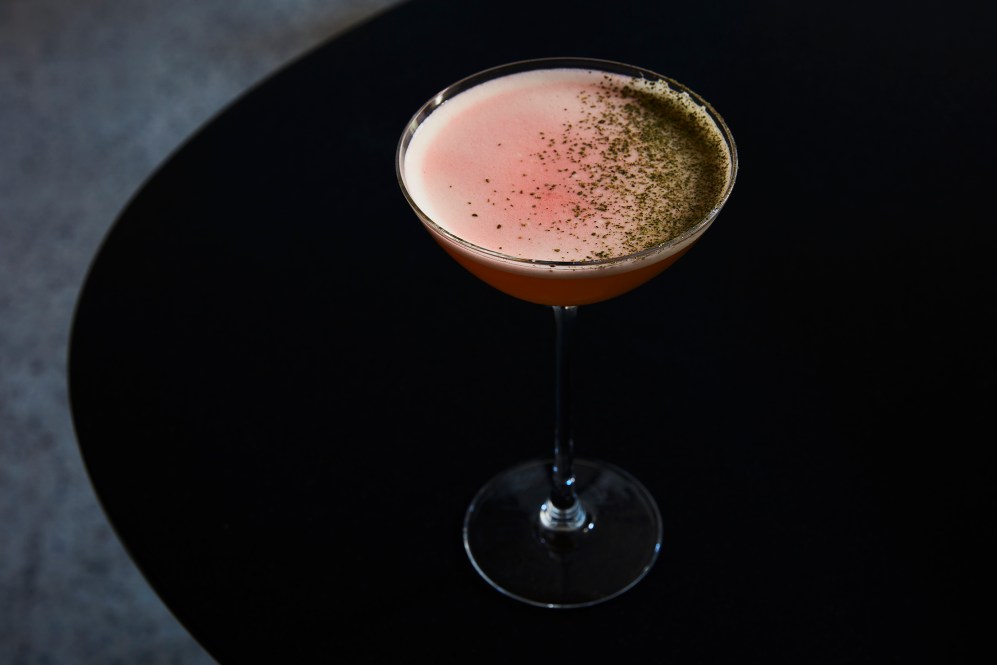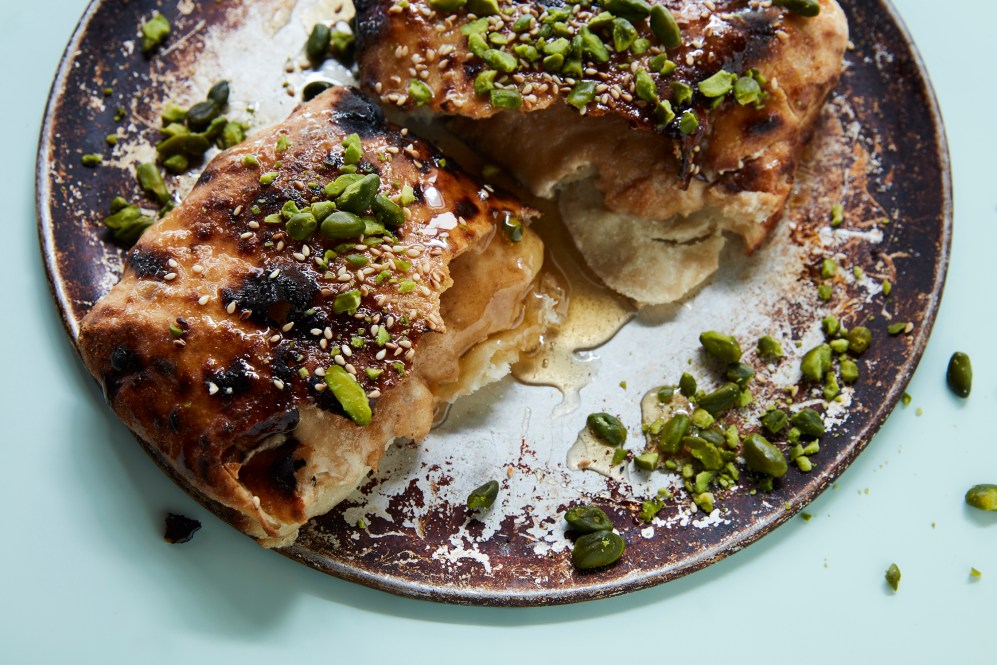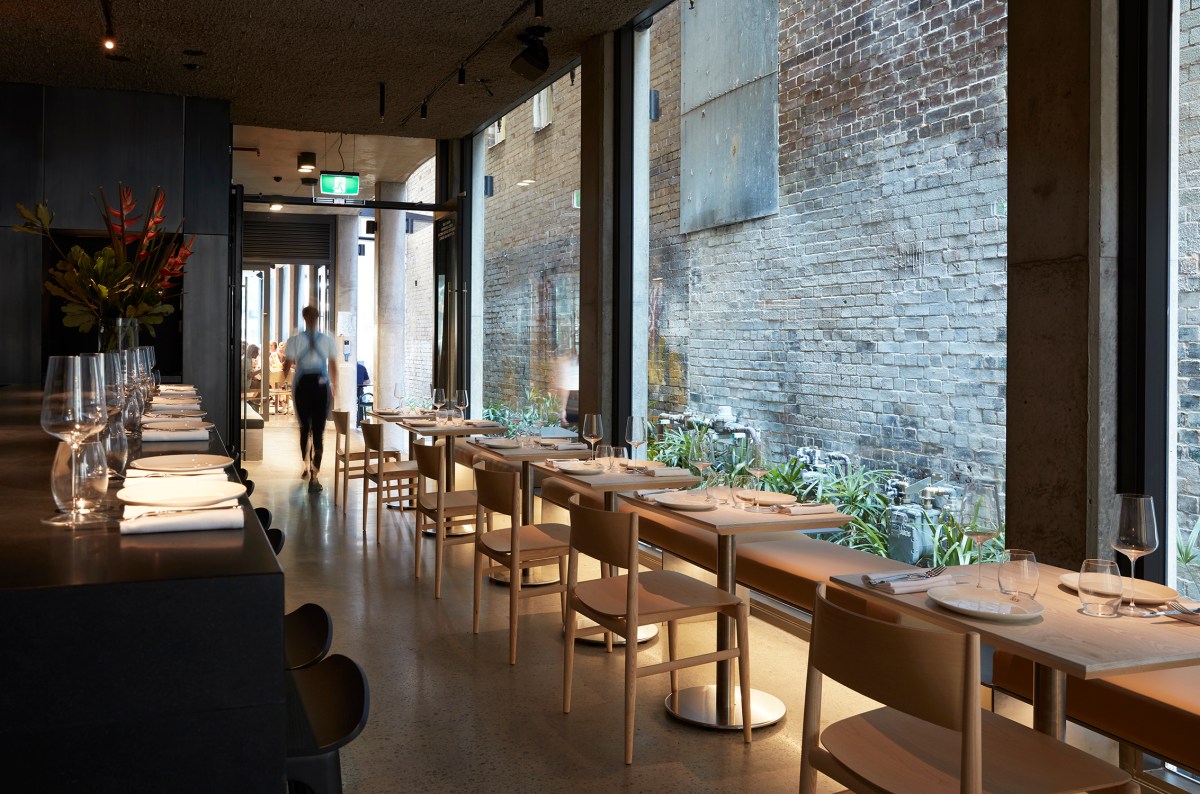Nomad Group is no stranger to the Sydney (and now Melbourne) dining landscape, with its namesake fine diner rolling Middle Eastern and Mediterranean influences together at a contemporary fine diner that’s stood the test of time.
Beau is a new style of venue for the group — a man’oushe-centric bakery and a casual wine bar that’s not only the cheeky little sibling of its stalwart relative, but an exploration in the power of the snack.
Hospitality speaks to Jacqui Challinor, the culinary force — aka executive chef — of Nomad and Beau about the group’s decision to enter the casual dining realm, filling the menu with nothing but hits and why two is better than one.
It’s hard to pinpoint the exact beginnings of Beau, but all you need to know is that conversations about the concept began “so bloody long ago,” says Executive Chef Jacqui Challinor, who estimates rumblings started around two years back. Beau was originally supposed to consist of a wine bar and a wine bar only, but a review of the space led to the group tacking on another lease.
“Al and Bec [Yazbek, co-founders of Nomad Group] fell in love with the laneway, and when I did a walkthrough with the landlords, they asked if we knew anyone who wanted to do a casual offering at the front.
Little old me said, ‘Why don’t we just do it?’ so that’s how we ended up with both tenancies. I always wanted to do something a little bit more chilled outside of the fine-dining restaurant scene, so it was a dream realised for me being able to do this.”
Opening a “fancy kebab shop” had been in the back of Challinor’s mind for a while, and Beau & Dough doesn’t fall far from the tree. The bakery centres around man’oushe — a flatbread covered in za’atar and oil in its most simplistic form and topped with cheese, pickles, vegetables or meat for a more dialled-up feed.
“It’s also a well-loved food for us at Nomad,” says the chef. “Al has Lebanese background and he’s always heading out to Lakemba to grab a bag of man’oushe to bring to the kitchen for a snack on weekends. It’s always had a special place in the hearts of us Nomads. It was the perfect space and the right time for us to give it a crack.”

The casual concept has ultimately provided a window for Nomad Group to tap into a wider market and reach patrons who are inclined to eat in a casual manner rather than sit down for a multi-course meal.
“Sydney has more high-end restaurants, whereas it’s much easier to grab a quick meal in Melbourne,” says Challinor. “Dining out isn’t a cheap exercise anymore, and that’s for its own reasons, but there’s definitely a need to fill the lower end of the market, which is where I hope we come in. It’s cool we can have this other offering where people can come through for a snack and not break the budget and also open up our market to those who would only come to Nomad for a special occasion.”
Beau & Dough starts serving its signature man’oushe from 9am, with the menu clocking za’atar; za’atar and cheese; spiced lamb; spinach, onion and sumac; spinach and feta; sujuk, egg and cheese and a wrapped and loaded version packed with za’atar, labneh, veg and herbs.
Supporting dishes include a vegetable plate with optional add-ons, a Middle Eastern-style chopped salad, hot chips and toum and a selection of sweeter options spanning a yoghurt Basque cheesecake, a tahini and choc-chip cookie and a pistachio, halva and honey man’oushe.
No matter the pick, each component is made with care. “A lot of the time, it gets relegated as the type of food you eat at 3am,” says Challinor. “I love the idea of taking something like this and redoing it with really great ingredients and skilled hands. It’s a bit of a passion project I wanted to play around with.”
Beau Bar launched just two weeks after Dough, with the team sharing one kitchen. “We essentially slapped two restaurant openings on top of each other and there’s the added complexity of doing two in one,” says Challinor. “But we love a challenge and always seem to rise in the face of adversity.”
The wine bar is fitted out with a cold larder manned by chefs who take care of everything from shucking oysters to carving lobsters. Seafood is a big part of Beau’s sell, and Challinor has worked with premium suppliers to fill out the ‘on ice’ section of the menu. Wagonga, Albany Rock or Merimbula oysters are paired with pink peppercorn granita, while Southern Rock lobster is served with nori salsa verde. It’s here where Challinor recommends diners begin their meal.
“The first point of call has to be something from the ice, even if it’s just a couple of oysters,” she says. “There’s a side of fries with anchovy taramasalata which people have been ordering with Champagne as a starter.”

Beau’s size means it’s nimble by nature, which has presented a welcome opportunity for Challinor to run dishes that would be a little harder to get across the line at Nomad. “Nomad is heavily influenced by Middle Eastern and Mediterranean cuisines, so I was looking forward to loosening those shackles and cooking what was in my head,” says the chef.
“Nomad is also a high-volume venue, and you have to be conscious about what you put on the plate because of the numbers we go through. Beau is a great outlet for me to experiment with some of the things I’ve had in my mind for years but haven’t been able to pull off at Nomad because it’s such a fast-paced kitchen.”
The 40-seater’s menu shifts into share-plate territory after the seafood section, and diners will notice there’s a running theme that binds dishes. “When you go to restaurants, I find the small plates are the most delicious and the main courses are usually never as good as those punchy snacks,” says Challinor. “So, we wanted to create a menu around solid small dishes and fill it out with larger options…all that good stuff you want to snack on while you sit at the bar with a glass of wine or a cocktail.”
There’s a lot to choose from, starting with a shiitake and basturma croquette; jamon Iberico with preserved tomatoes and Padron peppers teamed with Ortiz anchovies and fried bread — a nod to panzanella. “It was born from my love of fried bread,” says Challinor. “We’re also doing a spin on the blooming onion with mushrooms over some macadamia purée. Being a smaller entity, it will be easier for us to shift dishes in and out and I am hoping we will have the opportunity to change things as ingredients become available.”
Larger plates range from slow-roasted lamb neck with chickpeas, green olives and sorrel to tomatoes with peach, capers and basil. “The lamb neck is with XO and there’s a pan-roasted coral trout with lobster beurre blanc and radish chimichurri,” says the chef.
“We’re also doing Holy Goat’s La Luna with fried polenta chips, which people have been ordering at the start.” Though the dish is listed in the ‘to finish’ section (which is rounded out with a yoghurt sorbet with pomegranate and fig leaf granita and soft chocolate with extra-virgin olive oil and sea salt), its versatile spirit reflects the rest of the menu, which encourages diners to order what they want, when they want. “I love the way the menu is formatted and how people can pick from either section — it’s a choose-your-own adventure.”

